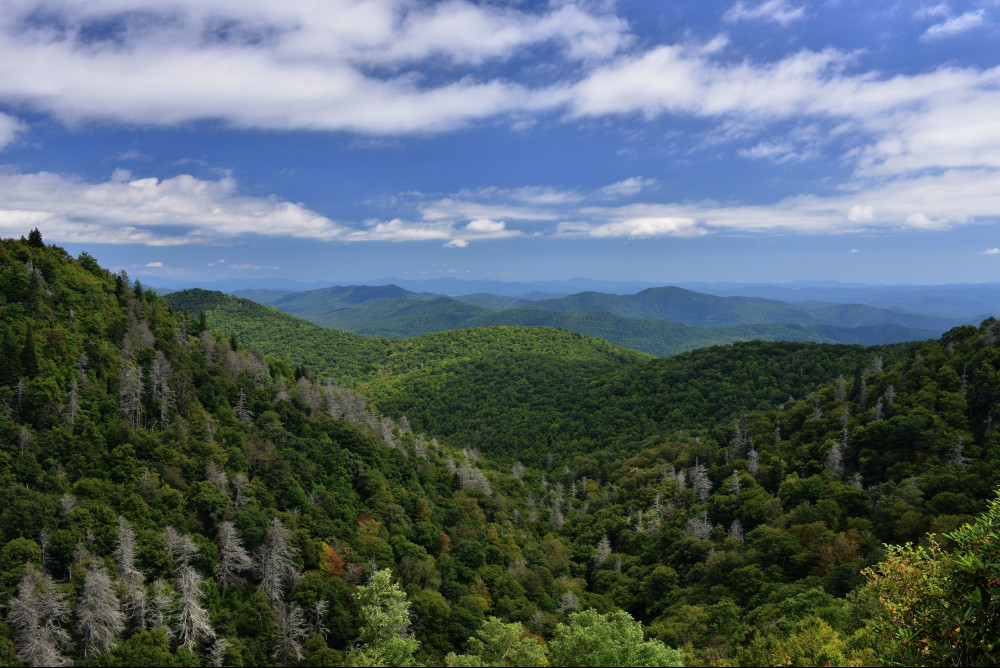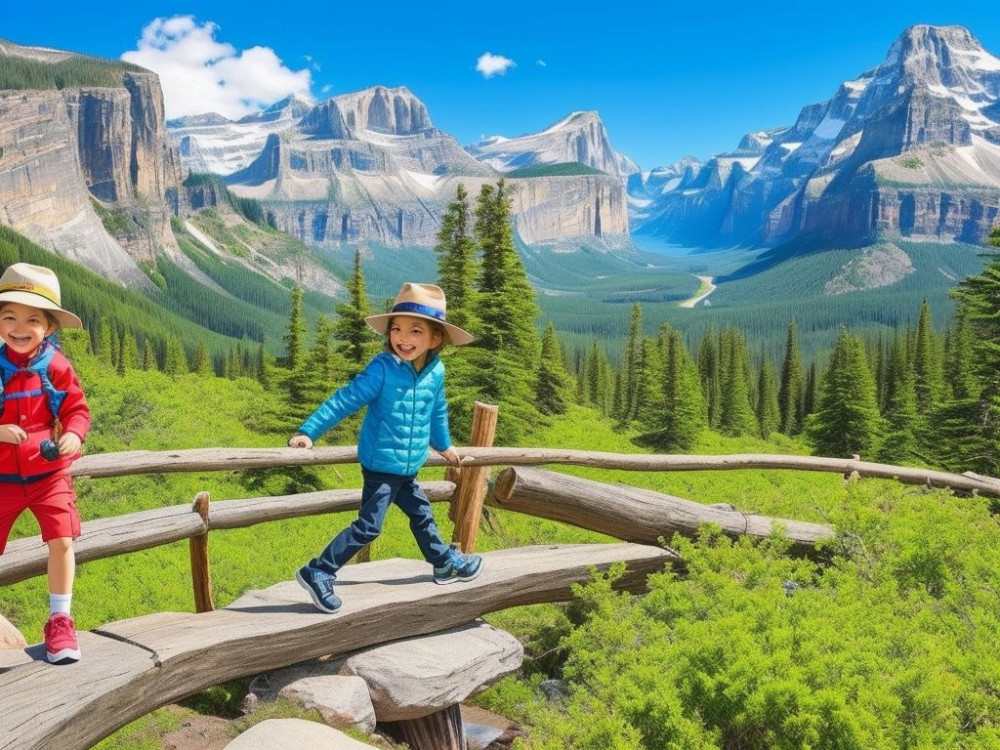Ready for the amazing Shenandoah National Park?
Enjoy spectacular mountains, lush forests, incredible wildlife, and historic sites! Looking for some peace and quiet or an adventure?
Shenandoah has it all! Come explore mankind’s wild side at this national park!
Introduction
Tucked away in the Blue Ridge Mountains, Shenandoah National Park astounds with its 200,000 acres of untouched wilderness.
Stroll through forests of lush greenery, gaze at gushing waterfalls and take in views that will take your breath away.
Discover colorful wildflowers and shy black bears, all coexisting in their natural habitat.
The park’s network of trails is perfect for all skill levels – whether you’re looking for a leisurely walk or a more strenuous hike up its peaks.
Ancient civilizations once lived here, and their relics are still scattered throughout the land.
The mysterious ‘Lost Colony‘ is particularly captivating; to this day, no one knows what happened to them.
Shenandoah National Park: where the magnificent beauty of nature and mystery of history combine, offering a truly unforgettable experience.
Location and History

(Photo by RCA)
Shenandoah National Park is situated in Virginia, USA’s Blue Ridge Mountains. It was created in 1935 and its history is rich with stories.
Get the facts:
- Year Founded: 1935
- Area (in acres): 200,000
- Visitors (annual): 1.39 million
This park offers a unique experience – wildlife like black bears, deer, and various birds, plus 500+ miles of hiking trails and views from Skyline Drive.
The Civilian Conservation Corps made a big impact during the Great Depression, creating campgrounds and picnic areas.
These historical artifacts can still be seen by visitors today.
Shenandoah National Park is a must-see for nature-lovers and history buffs. Don’t miss out on exploring the wild Blue Ridge Mountains!
Geography
Shenandoah National Park is situated in the state of Virginia.
It covers an area of around 200,000 acres and has an elevation ranging from 600 to over 4,000 feet.
In addition to its Blue Ridge Mountains, this park is also home to multiple waterfalls, creeks, and rivers.

(Photo by NPS / A. Armstrong)
The park is known for its diverse wildlife and plant life.
You can find various species like black bears, bobcats, deer, and more.
Plus, the park has over 500 miles of hiking trails that let you explore its natural wonders.
Pro Tip: Pack accordingly when visiting the park. Bring appropriate footwear and clothing for different elevations and weather conditions.
Don’t forget to bring a map or guidebook to navigate the trails safely.
Be prepared for any season as Shenandoah National Park will test your resilience.
Climate
Shenandoah National Park’s climate is diverse. Summers are hot and humid, while winters are cold and snowy.
The park’s location in the Blue Ridge Mountains leads to different temperatures at higher elevations.
Rainfall is spread out throughout the year, but October is usually the wettest. Snow is common in winter.
Fall is special at the park. Cooler temperatures and lower humidity create the perfect conditions for stunning colors. This attracts visitors from far and wide.
Plan ahead for your trip. Weather can be unpredictable in mountainous regions.
Pack the right gear!
Shenandoah National Park is a feast for the eyes. The flora and fauna thrive in this cycle of life and death.
Nature’s beauty is on full display.
Flora and Fauna
Shenandoah National Park is a natural wonder, full of diverse plant and animal life.

Take a closer look and you’ll find Eastern Hemlock, Red Maple, Yellow Birch, American Beech, Purple Coneflower, and Common Milkweed.
You’ll also find White-tailed Deer, Black Bear, Bobcat, Eastern Box Turtle, Wild Turkey and Pileated Woodpecker.
Plus, the park boasts over 1,400 species of plants, attracting migratory birds such as Scarlet Tanagers and warblers.
And don’t forget the brook trout.
Stocked till the 1930s, now they inhabit only their native waters within the park’s streams.
In conclusion, Shenandoah’s Flora and Fauna form a complex tapestry.
Exploring its depths teaches us about conservation and highlights the importance of preserving nature for future generations.
Ecosystem
Shenandoah National Park’s ecosystem is teeming with life: from forests with over 75 tree species, to streams full of native brook trout and macroalgae, to the unique underground habitat of its caves.
Not to mention the abundant fauna, like white-tailed deer, red foxes, and bears!
Herbaceous plants and grasses blanket the grasslands, providing homes to endangered insects, butterflies, and reptiles.
Common Milkweed, Little Blue Stem Prairie Dropseed, Blazing Star, and 1,000 insect species also call this park home.
Why bother conserving nature when we can just pave it over and sell parking spaces?
Conservation
Are you ready to take recreation to new heights? Then pack your hiking boots and get ready for adventure at Shenandoah National Park!
Here, natural resources are protected and conserved with utmost care. Forests, wetlands, and wildlife habitats are maintained to preserve the park’s diverse ecosystems.
Shenandoah National Park also educates visitors about sustainable practices and the importance of conservation.
Studies are conducted in collaboration with various organizations and researchers to understand species populations, land management techniques, and climate change impacts.
The park implements measures to prevent pollution and limit human disturbance in sensitive areas.
Trails are carefully designed to minimize erosion, and campsites are strategically placed to reduce their impact.
The success of conservation efforts is beautifully exemplified by the comeback of the peregrine falcon population.
Once on the brink of extinction due to pesticide use and habitat loss, these amazing birds now soar through the skies above Shenandoah.
Thanks to extensive conservation efforts, future generations can continue to enjoy its wonders.
Recreation
Shenandoah National Park provides plenty of possibilities for outdoor fun! Hiking, camping, and picnicking are all available. Plus, witness the awe-inspiring scenic overlooks. Immerse yourself in nature’s beauty!
Here’s a guide to activities and difficulty levels:
| Activity | Location | Difficulty |
|---|---|---|
| Hiking | Various Trails | Easy to Difficult |
| Camping | Campgrounds | Moderate |
| Picnicking | Designated areas | Easy |
| Wildlife Viewing | Throughout park | Easy |
For something extra special, try the night sky programs, or go birding! Shenandoah National Park has something for everyone.
Don’t forget your binoculars! For an even more incredible experience, plan your visit in the fall when the foliage is colorful.
Tourism
Shenandoah National Park, nestled in Virginia’s majestic Blue Ridge Mountains, is a paradise for nature-lovers and outdoor enthusiasts.
It’s no surprise that tourism is so crucial to this stunning natural haven.
Visitors are dazzled by its gorgeous views, cascading waterfalls and radiant autumn foliage.
Hiking fanatics can explore over 500 miles of trails – from simple paths to tough summits.
Camping facilities are available for those wishing to experience the peaceful wilderness.
Wildlife-watchers can marvel at the park’s many species, from black bears and deer, to warblers singing melodiously in the forests. Peregrine falcons also reside here – if you’re lucky, you may spot one!
The Byrd Visitor Center offers educational exhibits on the park’s history and ecology. This allows visitors to gain a better understanding of the park.
Pro Tip: To make the most of your visit to Shenandoah National Park, plan for weekdays and off-peak times. This way, you can avoid the crowds and enjoy a more intimate connection with nature.
Future
The future of Shenandoah National Park looks bright. With conservation and sustainable tourism, the park will last for future generations.
What lies ahead?
Here’s a look:
| 1. Wildlife Preservation | The park will keep protecting the species living there, preserving their homes. |
| 2. Environmental Education | Visitors will learn about conservation and how to be sustainable. |
| 3. Trail Expansion | More trails will give visitors the chance to explore nature. |
| 4. Collaborative Conservation Efforts | Working with local communities and groups will help sustain the park. |
Shenandoah National Park also plans to make the experience better by offering interpretive programs and updating facilities.
Plus, it has Skyline Drive, a 105-mile stretch along the Blue Ridge Mountains with incredible views.
Finally, here’s an inspiring story from the park. A young couple hiking encountered wildlife and were in awe of nature. This motivated them to start their own nonprofit to protect habitats.
FAQ
What is Shenandoah National Park?
Shenandoah National Park is a beautiful national park located in the Blue Ridge Mountains of Virginia, USA. It spans over 200,000 acres and offers breathtaking views, diverse wildlife, and numerous recreational opportunities.
How do I get to Shenandoah National Park?
You can reach Shenandoah National Park by car through the Skyline Drive, a scenic road that runs the entire length of the park. The park has four convenient entrances, and the closest major airports are in Charlottesville and Washington, D.C.
What activities are available in Shenandoah National Park?
Shenandoah National Park offers a wide range of activities for visitors. You can go hiking on one of the park’s many trails, enjoy a scenic drive on the Skyline Drive, go camping, birdwatching, fishing, or even horseback riding. The park also has educational programs and ranger-led activities.
Are pets allowed in Shenandoah National Park?
Yes, pets are allowed in certain areas of Shenandoah National Park. They must be on a leash at all times and are limited to picnic areas, campgrounds, and paved areas such as roads and parking lots. However, they are not allowed on any of the park’s trails.
Are there accommodations available in Shenandoah National Park?
Yes, there are accommodations available in Shenandoah National Park. The park has several campgrounds, lodges, and cabins for visitors to stay in. These accommodations provide a great way to experience the park’s natural beauty and enjoy a comfortable stay.
What is the best time to visit Shenandoah National Park?
The best time to visit Shenandoah National Park depends on your preferences. The park is beautiful year-round, but the peak tourist season is from spring to fall when the weather is pleasant and the foliage is vibrant. However, visiting during winter can offer a unique experience with fewer crowds and stunning snow-covered landscapes.




Leave a Reply